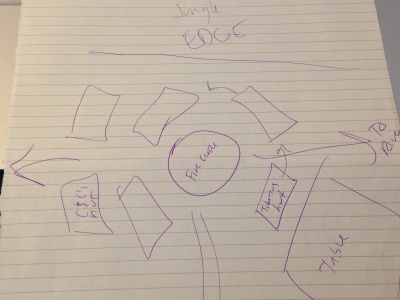It's been several weeks since I highlighted a book I've enjoyed recently because my reading slowed down during the month of March. But, life is back to its normal pace and I finished a great book this morning–Deathmaker by Lindsay Buroker.
I've read a few of Buroker's books now, and she is quickly rising to the top of my favorite authors list. She writes fantasy, urban fantasy, and steampunk. Her books are filled with action, snappy dialogue, rich worlds and great characters. This is the second book of the Dragonblood series, but it reads like a standalone due to the focus on different characters. If you are looking for a new book to read, I recommend checking out the Dragon Blood series by Buroker. At the moment, you can pick up the first three books in the series for only $0.99.
When Lieutenant Caslin Ahn joined Wolf Squadron, she was prepared for the reality that she might one day be killed in the line of duty. She was less prepared for being shot down, assumed dead by her own people, and dragged off to the Cofah Empire as a prisoner of war. As if being thrust into a dungeon and interrogated wasn't bad enough, the sadistic commandant decides to give her a cellmate: the notorious pirate Deathmaker. Given the crimes he's committed against Iskandia, Cas owes it to her people to try and kill him.
Part warrior and part scientist, Tolemek "Deathmaker" Targoson has not only slain thousands with his deadly concoctions, but he has a special loathing for Iskandian pilots. It was Ahn's commander, Colonel Zirkander, who ruined his military career, forcing him to leave his country in shame and join a pirate organization. Years later, he uses his dreadful reputation like a shield to keep people away; all he wants is to be left alone to work in his laboratory. But when fate lands him in a cell with Zirkander's protégé, he sees a chance for revenge. Why kill the lieutenant when he can use her to get to his old nemesis?
There's just one problem: it's hard to plot against your enemies when you're in prison with them. Cas and Tolemek will have to work together if they hope to escape the Cofah dungeon. In the process, they may find that neither is what the other expects, and that they have far greater problems to worry about than ensnaring each other...


